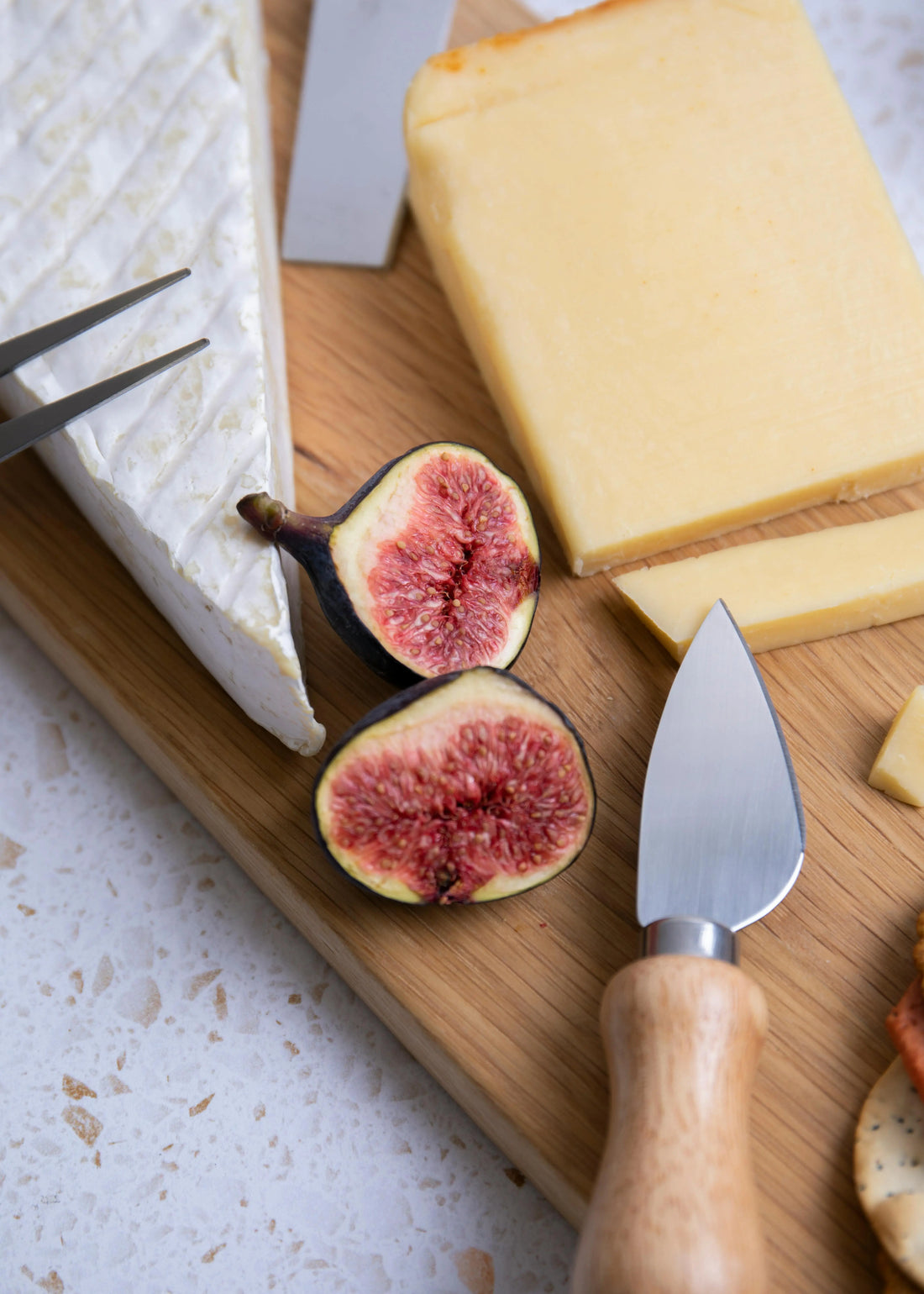
The Cheese Lover's Glossary: Decoding Common Cheese Terms
Share
Navigating the world of cheese can feel like learning a new language. From "affinage" to "terroir," there's a whole glossary of terms that can leave even seasoned cheese lovers scratching their heads. But fear not, fromage fanatics! This guide will decode common cheese terms, empowering you to confidently explore the delicious universe of cheese.
Here are some common cheese terms
A - C
- Affinage: The process of aging cheese, including the environment, temperature, and humidity control, to develop its desired flavor and texture. A skilled affineur is a master of this craft.
- Artisanal Cheese: Cheese made in small batches, often by hand, using traditional methods and emphasizing quality over quantity.
- Bloomy Rind: A soft, white, velvety rind that develops on some cheeses due to the presence of specific molds, like Penicillium candidum. Brie and Camembert are examples.
- Blue Cheese: Cheese characterized by blue or green veins of mold, giving it a distinctive pungent flavor. Roquefort and Gorgonzola are popular examples.
- Casein: The primary protein in milk, crucial for cheesemaking.
- Cheese Cave: A controlled environment used for aging cheese, often with specific temperature and humidity levels.
- Coagulation: The process of milk solidifying into curds, typically achieved using rennet.
- Creamy: A texture descriptor, indicating a smooth, rich, and easily spreadable cheese.
- Curd: The solid part of milk that forms during cheesemaking after coagulation.
- Culture: Bacteria or molds intentionally added to milk during cheesemaking to influence flavor and texture.
D - G
- Double Cream/Triple Cream: Designations based on the percentage of milkfat. Double cream has 60-75% milkfat, while triple cream boasts over 75%.
- Dry-aged: Refers to cheeses aged for extended periods, resulting in concentrated flavors and a drier texture.
- Farmstead Cheese: Cheese made entirely on the farm where the milk is produced, from the farm's own animals.
- Fromage: The French word for cheese.
- Fromager: A cheese expert or cheesemonger.
- Goat Cheese (Chèvre): Cheese made from goat's milk, often with a tangy and slightly earthy flavor.
- Grassy: A flavor descriptor, often used for cheeses with a fresh, herbaceous aroma.
H - M
- Hard Cheese: Cheeses that are aged for longer periods, resulting in a firm texture and concentrated flavors. Parmesan and Cheddar are examples.
- Microflora: The community of microorganisms (bacteria, yeasts, molds) present in cheese, contributing to its flavor and aroma.
- Milkfat: The fat content of milk, which plays a crucial role in cheese flavor and texture.
O - R
- Pasteurization: The process of heating milk to kill harmful bacteria. While some cheeses are made with pasteurized milk, others are made with raw (unpasteurized) milk.
- Rennet: An enzyme used to coagulate milk in cheesemaking.
- Rind: The outer layer of a cheese, which can be natural, washed, or bloomy.
S - Z
- Semi-hard Cheese: Cheeses with a texture that falls between soft and hard. Gouda and Gruyère are examples.
- Soft Cheese: Cheeses with a high moisture content and a creamy or spreadable texture. Brie and Camembert are examples.
- Terroir: The environmental factors (soil, climate, etc.) that affect the flavor of cheese, similar to wine.
- Washed-Rind Cheese: Cheeses that are washed during aging with a brine or other liquid, resulting in a pungent aroma and a sticky rind.
This glossary is just a starting point. The world of cheese is vast and ever-evolving, with new terms and techniques constantly emerging. So, embrace the journey, keep learning, and most importantly, keep tasting!
What other cheese terms are you curious about? Ask us in the comments below!